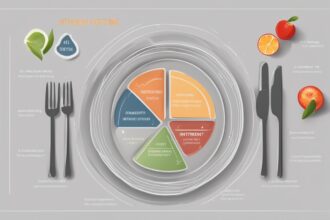Fasting has long been celebrated for its potential health benefits, from improved mental clarity to enhanced physical well-being. One of the most exciting aspects of fasting is its ability to energize the body through strategic timing of meals, a practice often referred to as timed eating. By focusing on Boosting Vitality with Timed Eating, individuals can tap into their body’s natural rhythms to optimize energy levels, improve metabolism, and enhance overall vitality. In this comprehensive guide, we’ll explore how timed eating can transform your energy levels and provide actionable tips to incorporate this practice into your daily routine.
What Is Timed Eating and How Does It Boost Vitality?
Timed eating, often associated with intermittent fasting, involves structuring your meals within specific windows of time to align with your body’s circadian rhythm. This approach not only aids in weight management but also plays a crucial role in Boosting Vitality with Timed Eating. When you eat within a defined period, typically 8–10 hours during the day, your body gets a prolonged break from digestion during the fasting window. This rest allows your system to focus on repair, regeneration, and energy optimization. Research suggests that timed eating can enhance mitochondrial function—the powerhouse of your cells—leading to sustained energy throughout the day.
By limiting late-night eating, you also prevent energy dips caused by insulin spikes and poor sleep quality. Instead, timed eating encourages stable blood sugar levels, which are essential for maintaining high energy and mental focus. If you’re curious about how fasting impacts overall health, check out our post on Fasting for Weight Loss for additional insights.
The Science Behind Boosting Vitality with Timed Eating
The connection between timed eating and vitality is rooted in science. When you fast for extended periods, your body shifts from using glucose as its primary energy source to burning stored fats through a process called ketosis. This metabolic switch not only helps in fat loss but also provides a steady stream of energy, preventing the crashes associated with frequent carbohydrate-heavy meals. Studies have shown that timed eating can improve insulin sensitivity, reduce inflammation, and even promote autophagy—a cellular cleanup process that rejuvenates your body at a microscopic level.
Moreover, aligning your eating window with daylight hours supports your circadian rhythm, which regulates sleep and energy cycles. Disruptions to this rhythm, such as late-night snacking, can lead to fatigue and reduced vitality. By adopting a timed eating schedule, you’re essentially resetting your internal clock for optimal performance. For more on how fasting affects metabolism, read our detailed guide on Fasting and Metabolism.
Benefits of Timed Eating for Energy and Vitality
The benefits of Boosting Vitality with Timed Eating extend far beyond just feeling more awake. Here are some key advantages:
- Enhanced Mental Clarity: Fasting periods allow your brain to access alternative energy sources like ketones, which are known to improve focus and cognitive function.
- Improved Physical Energy: With stabilized blood sugar levels, you avoid the energy rollercoaster that comes with frequent eating.
- Better Sleep Quality: Eating within a specific window, especially earlier in the day, supports melatonin production, helping you sleep deeper and wake up refreshed.
- Reduced Stress on the Body: Giving your digestive system a break reduces systemic inflammation, allowing your body to allocate energy to other vital functions.
These benefits collectively contribute to a heightened sense of vitality, making timed eating a powerful tool for anyone looking to elevate their energy levels naturally. To explore how fasting can also improve mental health, see our article on Fasting for Mental Clarity.
How to Start Boosting Vitality with Timed Eating
Getting started with timed eating doesn’t have to be complicated. Here’s a step-by-step guide to help you incorporate this practice into your lifestyle:
- Choose Your Eating Window: A popular approach is the 16:8 method, where you fast for 16 hours and eat during an 8-hour window. For example, eat between 12 PM and 8 PM.
- Start Gradually: If you’re new to fasting, begin with a 12:12 schedule (12 hours fasting, 12 hours eating) and slowly narrow your eating window over a few weeks.
- Prioritize Nutrient-Dense Foods: During your eating window, focus on whole foods like vegetables, lean proteins, and healthy fats to fuel your body efficiently.
- Stay Hydrated: Drink plenty of water during fasting periods to support detoxification and maintain energy levels.
- Listen to Your Body: Adjust your eating window based on how you feel. Some people thrive with an earlier window (e.g., 10 AM to 6 PM), while others prefer a later one.
For beginners, consistency is key. Track your energy levels and make adjustments as needed. If you’re looking for meal ideas during your eating window, check out our post on Fasting Meal Plans.
Common Challenges and How to Overcome Them
While Boosting Vitality with Timed Eating offers numerous benefits, it’s not without challenges. Hunger pangs, social eating pressures, and initial fatigue are common hurdles. To manage hunger, ensure your meals are balanced with fiber, protein, and fats to keep you satiated. Drinking herbal teas or black coffee during fasting periods can also curb appetite. For social situations, plan your eating window around events or communicate your fasting schedule to friends and family for support.
Initial fatigue often occurs as your body adjusts to a new energy source. Give yourself time—most people report a surge in energy after the first week or two. If fatigue persists, consult a healthcare provider to rule out underlying issues. For tips on maintaining energy during fasting, read our guide on Fasting Energy Tips.
Who Should Try Timed Eating for Vitality?
Timed eating can benefit a wide range of individuals, from busy professionals seeking sustained energy to athletes looking to optimize performance. However, it’s not suitable for everyone. Pregnant or breastfeeding women, individuals with certain medical conditions (like diabetes), or those with a history of eating disorders should consult a healthcare provider before starting. For most healthy adults, timed eating is a safe and effective way to boost vitality, but personalization is key. Tailor your fasting schedule to your lifestyle, energy needs, and health goals for the best results.
Disclaimer: The information provided in this article is for educational purposes only and should not be considered medical advice. Fasting or timed eating may not be suitable for everyone, and results can vary based on individual health conditions and lifestyles. Always consult with a healthcare professional or nutritionist before starting any fasting regimen or making significant changes to your diet, especially if you have pre-existing medical conditions or are on medication.
References
- Patterson, R. E., & Sears, D. D. (2017). Metabolic Effects of Intermittent Fasting. Annual Review of Nutrition.
- Harvard Health Publishing. (2018). Intermittent Fasting: Surprising Update.
- Mayo Clinic. (2020). Intermittent Fasting: What Is It, and How Does It Work?
- de Cabo, R., & Mattson, M. P. (2019). Effects of Intermittent Fasting on Health, Aging, and Disease. New England Journal of Medicine.
- Johns Hopkins Medicine. (n.d.). Intermittent Fasting: What Is It, and How Does It Work?
This content is for informational purposes only and not a substitute for professional advice.





